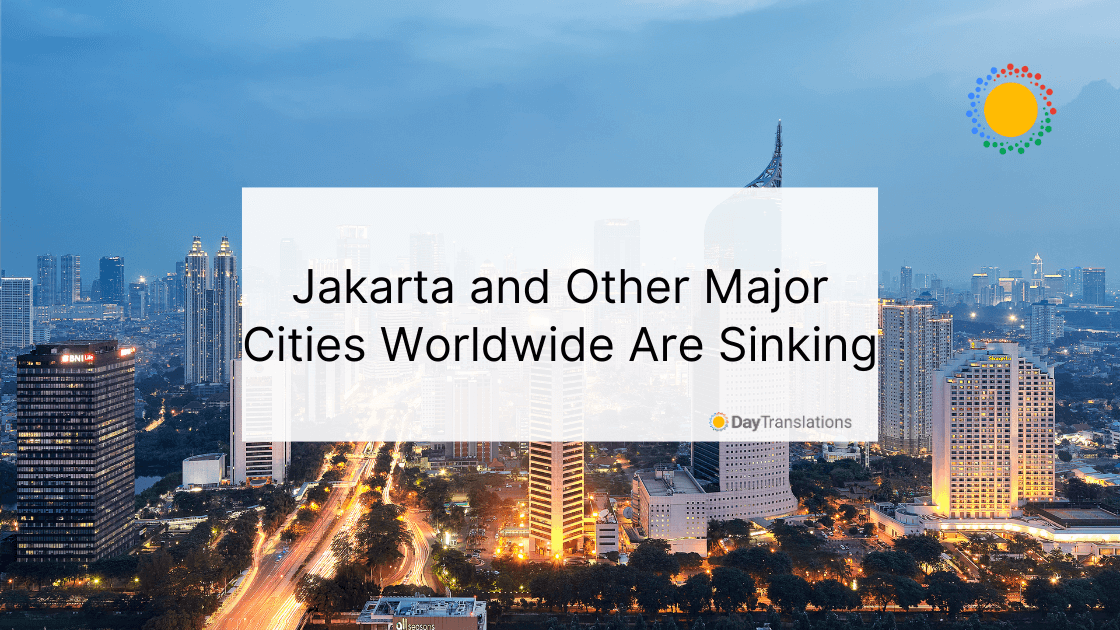Jakarta, the capital city of Indonesia, is reported to be one of the world’s fastest sinking cities today. While it is not the only city that is sinking, the rate of sinking is causing alarm to the Indonesian government. Indonesian President Joko Widodo announced a few days ago that the country’s capital would relocate to the island of Borneo.
He cited several reasons for the relocation. He said there are fewer forest fires, floods and earthquakes in Borneo, which is 1,800 kilometers from Jakarta. The President added that Borneo occupies a central location, close to many developed cities, has enough infrastructure and government land is already available. President Widodo did not mention that Jakarta, which has been the nation’s capital since the 17th century, is sinking faster than other major cities.
Major Culprits
The rising sea levels and over-extraction of groundwater are the significant causes of sinking cities. Global warming, resulting in the melting of the polar ice caps contribute to the worldwide issue. The World Economic Forum released the report regarding the sinking of Jakarta, which is one of the fastest, the reason why many people are concerned. In the past 30 years, parts of Jakarta have sunk by about four meters. The projection is that in 30 years only 5% of North Jakarta will be above water because of the rate the city is sinking,
The location of Jakarta is swampy, where 13 rivers flow through that particular region of Indonesia. But due to the sinking phenomenon, the rivers have to flow uphill to reach the Java Sea. This occurrence means that many of these rivers overflow, causing floods and soaking the land, making it soft. It will have drastic effects on 1.8 million people living in the area.
Need for Groundwater
Despite being surrounded by water, Jakarta does not have access to piped water delivered to homes. Instead, the communities have to rely on groundwater extracted from aquifers deep below the ground. These aquifers, however, are not replenished adequately by rainfall, causing the soil underneath Jakarta to compact and collapse.
Government regulations allow residents and businesses to dig their wells at their discretion. The city does not have a reliable water supply system to deliver clean water to homes and business establishments.
More Sinking Cities
Jakarta is sinking at an alarming rate. However, it is not the only sinking city. In the United States, some cities are also in trouble.
Houston has been experiencing the same problem as Jakarta for decades. The city is also over extracting groundwater. Since the 1920s, there were reports that Harris County, which includes Houston, has already sunk by about 3 meters or 12 feet. Other areas are also sinking by as much as two inches annually.
Although regulations established about the extraction of groundwater in 1975 are in place, water suppliers and private landowners continue to draw water from the ground.
The city of New Orleans is in the same predicament. It is very close to the coast of the Mississippi River. In the 1930s, about one-third of the city was already below sea level, but half of the city went under in 2005 after Hurricane Katrina hit the area. The vulnerability of New Orleans is caused by its location, sitting on loose soil close to the shore. It is now sinking at the rate of 1 centimeter each year. Washington, D.C. is also sinking and research done in 2015 showed that in the next century, the capital of the United States would sink by over 6 inches or 15 centimeters. The sinking is not due to rising sea levels or the extraction of groundwater. Washington, D.C. is positioned over an ice sheet that was a remnant of the last ice age some 10,000 years ago.
While the rate of sinking is gradual and very slow, the rising levels of the Chesapeake Bay could escalate the problem.
Other possible sinking cities across the United States are New York, Miami, Boston and San Francisco.
In other parts of the world, several areas are in the list of sinking cities. In Asia, one of the leading cities is Beijing. The situation in China’s capital is similar to Jakarta and Houston. As of 2016, the several parts of the city are sinking by 10 centimeters or 4 inches each year. Because Beijing is not near the coast, it depends heavily on groundwater as its primary water source. The accumulation of groundwater has been occurring for many years. The high demand for water, however, caused the over-extraction, leading to the compacting of the soil, which induced the sinking.
Lagos is Africa’s most populous city. It is located in Nigeria’s coast, making the town suffer from constant flooding and soil erosion. Climate change and rising sea levels has placed the city at the risk of being underwater by the end of the 20th century.
Caring for the Environment
As cultural experts, we at Day Translations, Inc. want to do our share in environmental care and preservation of culture by donating to various charities and environmental protection initiatives. Keep the communication lines open among cultures with accurate translation. Give us a call anytime at 1-800-969-6853 or send us an email at Contact us. We’re open 24/7, 365 days of the year so you can contact us at your convenience.












Sorry, the comment form is closed at this time.